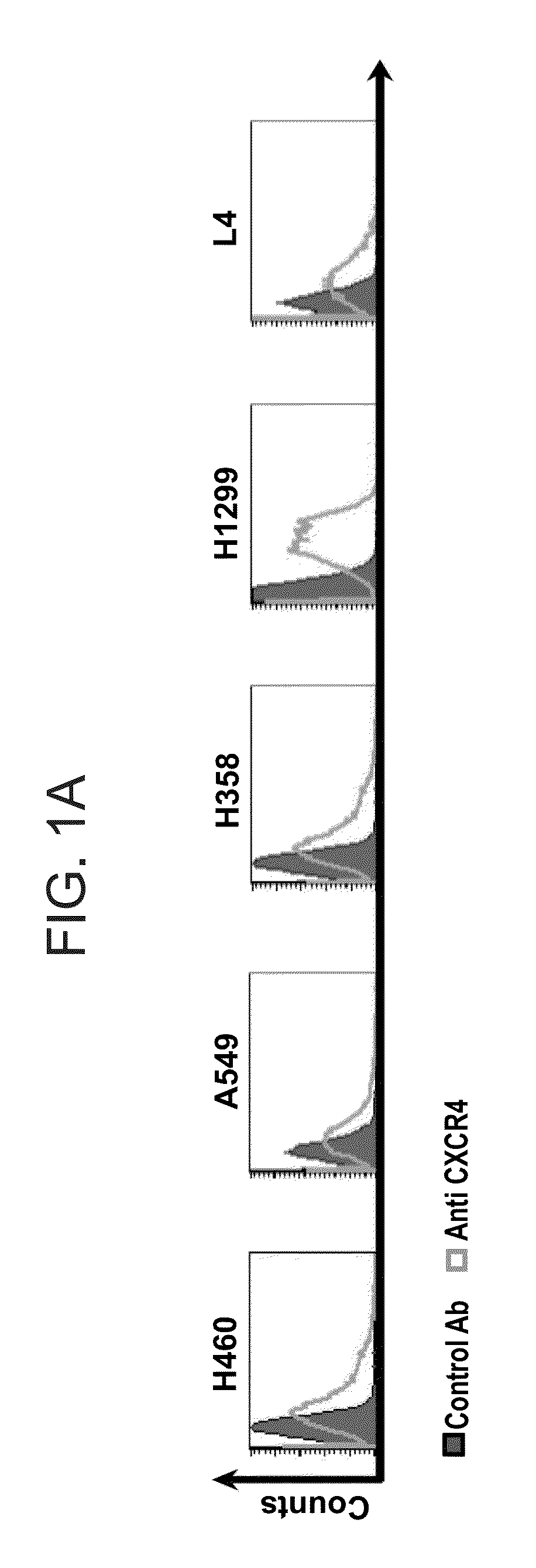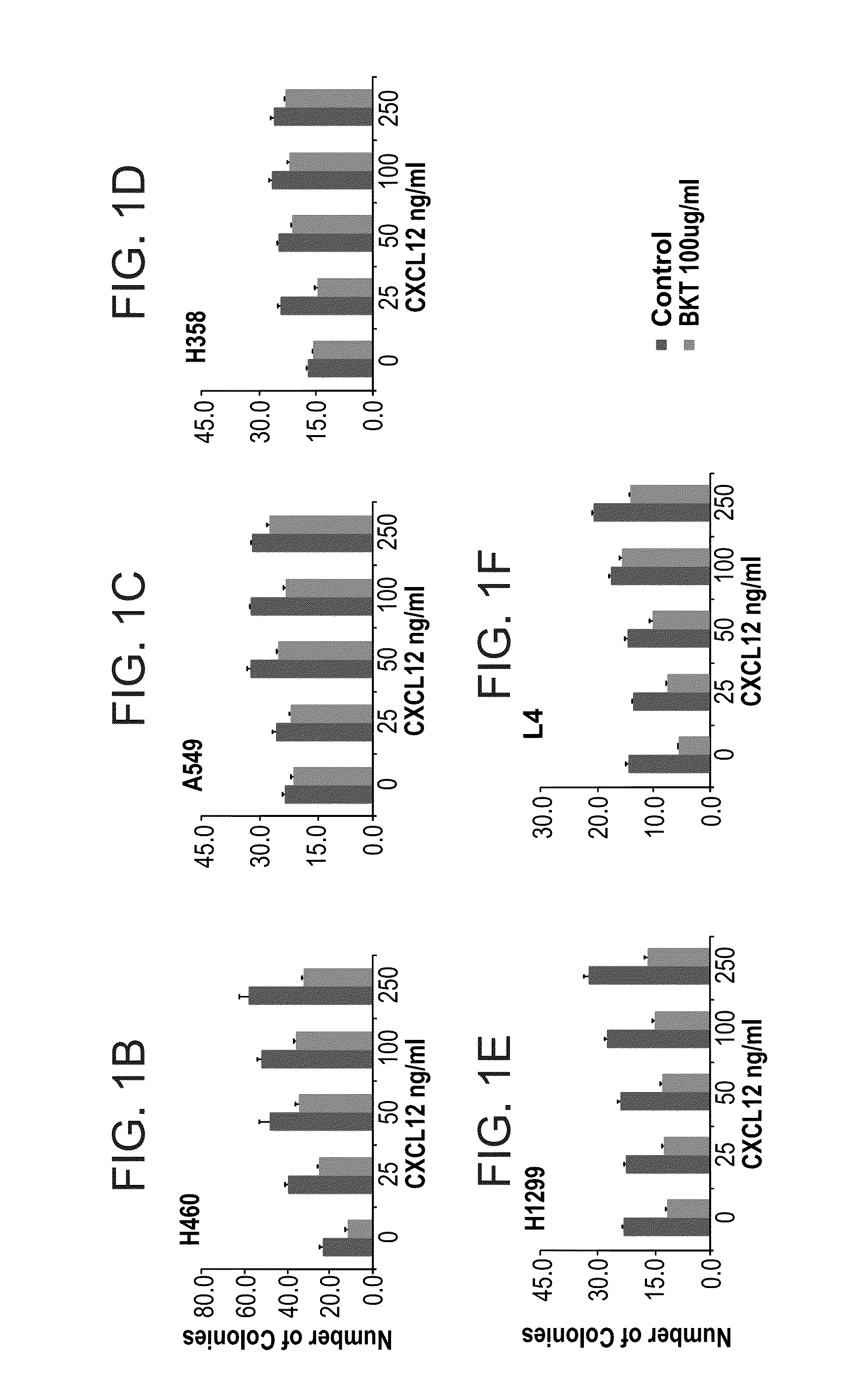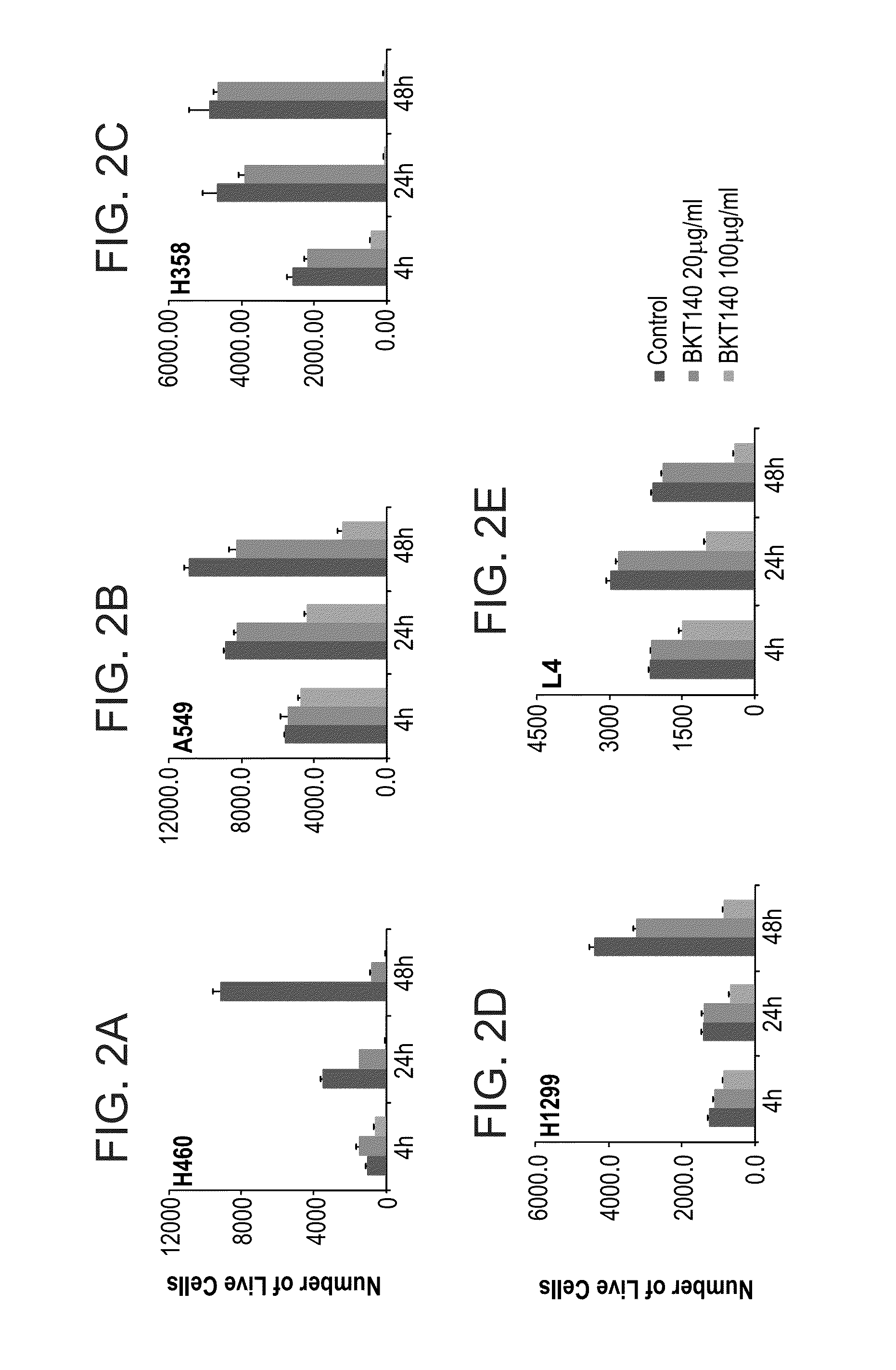Peptides and use thereof in the treatment of large cell lung cancer
a technology of lung cancer and peptides, which is applied in the direction of peptide/protein ingredients, drug compositions, and therapy, etc., can solve the problems of poor prognosis, the death rate of lung cancer remains a global health problem, and the aggressiveness of large cell lung cancers
- Summary
- Abstract
- Description
- Claims
- Application Information
AI Technical Summary
Benefits of technology
Problems solved by technology
Method used
Image
Examples
example 1
[0233]CXCL12 Induce NSCLC Colony Formation in a CXCR4 Dependant Manner
[0234]Materials and Experimental Procedures
[0235]Cell Lines
[0236]The H460 (large cell carcinoma), A549 (Adenocarcinoma), H358 (Bronchoalveolar carcinoma), H1299 (large cell carcinoma)—cell lines were all purchased from ATCC and were maintained in RPMI (Gibco Laboratories, Grand Island, N.Y.) containing 10% fetal calf serum (FCS), 1 mM L-glutamine, 100 U / ml penicillin, and 0.01 mg / ml streptomycin (Biological Industries, Kibbutz Beth Haemek, Israel). L-4 (a primary NSCLC cell line) was generated from large cell carcinoma as previously described (Wald et al, J Thorac Cardiovasc Surg. 2011 June; 141(6): 1503-12). All cell lines were tested for mycoplasma contamination and were found to be negative.
[0237]Flow Cytometry
[0238]Logarithmically growing cells were harvested, washed and 1*105 cells were stained with anti-human CXCR4 polyclonal anti-N-terminus antibody (Millipore) for 30 minutes at 4° C. PE-labelled donkey ant...
example 2
[0245]BKT140 Inhibits NSCLC Proliferation
[0246]Materials and Experimental Procedures
[0247]Cell Lines
[0248]As described in Example 1, above.
[0249]Proliferation Assay
[0250]To measure cell proliferation, 4000 cells were seeded into 96-well cell culture plates with 200 μl RPMI 1640 medium supplemented with 10% FCS under the following conditions: 37° C., and 5% CO2. Twenty-four hours later, the medium was to changed to RPMI 1640 supplemented with 1% FCS. 20 μg\ml, 50 μg / ml or 100 μg\ml BKT140, with or without Cisplatin 0.1 μg / ml or paclitaxel 0.1 μg / ml to 1 μg / ml μg / ml were added to the medium. For radiation experiments, prior to plating of cells, the cells were irradiated at the following doses 500 to 2000 Rad. Cultured cells were fixed with 2.5% Gluteraldehyde at the indicated time points and stained with 1% Methylene Blue. Color extraction was done using 0.1 N HCl. Absorbance of the solution in each well at 570 nm was read with micro-plate reader (Anthos Htll). 6 wells were determined...
example 3
BKT140 Treatment Delays NSCLC Tumor Growth In Vivo
[0259]Materials and Experimental Procedures
[0260]Cell Lines
[0261]As described in Example 1, above.
[0262]In Vivo Experiments
[0263]1*106 H460 cells mixed in 100 μl RPMI 1640 and 100 μl matrigel (BD Bioscience) were injected subcutaneously (S.C.) into the right flank of Nude mice. Tumor growth was followed for 19 days. 1*106 A549 cells mixed in 100 μl RPMI 1640 and 100 μl matrigel (BD Bioscience) were injected S.C. into the right flank of Nude mice. Tumor growth was followed for 35 days. Systemic BKT140 administration was performed as follows: BKT140 (400 μg / mice dissolved in PBS) was administered once daily 6 / 7 days a week, by S.C. injection into the left flank at a point distant at least 1.5 cm from the right sided tumor. Tumors size was calculated by measurement of tumor length and width using the following formula: 4 / 3*π*(length / 2)*(width / 2)̂2.
[0264]Immunohistochemistry
[0265]Tissue sections of tumor-bearing Nude mice were routinely ...
PUM
| Property | Measurement | Unit |
|---|---|---|
| time | aaaaa | aaaaa |
| time | aaaaa | aaaaa |
| time | aaaaa | aaaaa |
Abstract
Description
Claims
Application Information
 Login to View More
Login to View More - R&D
- Intellectual Property
- Life Sciences
- Materials
- Tech Scout
- Unparalleled Data Quality
- Higher Quality Content
- 60% Fewer Hallucinations
Browse by: Latest US Patents, China's latest patents, Technical Efficacy Thesaurus, Application Domain, Technology Topic, Popular Technical Reports.
© 2025 PatSnap. All rights reserved.Legal|Privacy policy|Modern Slavery Act Transparency Statement|Sitemap|About US| Contact US: help@patsnap.com



